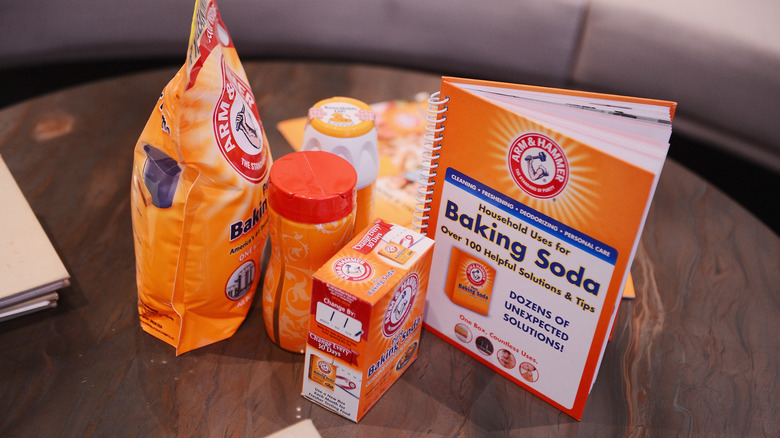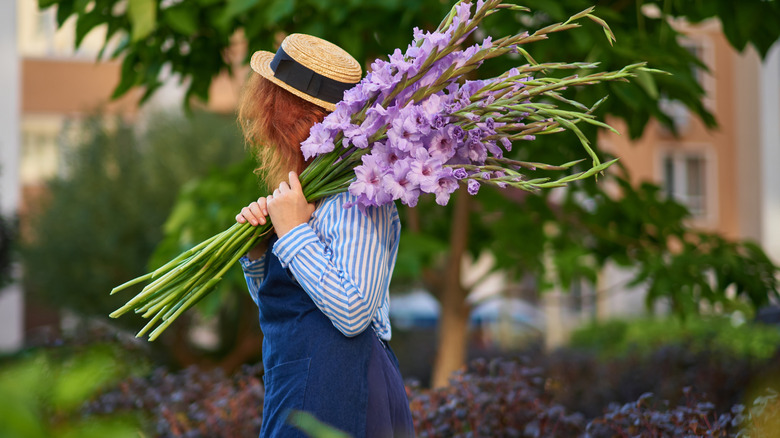Gladiolus, sometimes called sword lilies, are a stunning addition to any flower garden. Not only do they make excellent and long-lasting cut flowers, but they also add color and interest in borders and as thriller elements in containers. Unfortunately, a fungus known as gladiolus rust (Uromyces transversalis) can infect these elegant plants, covering their leaves with pustules and, in some cases, preventing them from flowering. Since gladiolus rust was first found in the United States in 2006, a variety of strategies and products have been used to prevent and combat it. Many home gardeners have found baking soda a useful tool in fighting gladiolus rust but it comes with drawbacks, including possible damage to your soil and your plants’ leaves. While there are many brilliant ways to use baking soda in your home and garden, it may not be the best option for fighting gladiolus rust.
Flowers in the genus Gladiolus are known for their bold blooms that can range from pinks and purples to yellows to reds and oranges. The flowers bloom off stalks that can reach up to 6 feet tall in some cases, so staking is essential for these beauties. Gladioli grow best in full sun and thrive in moist, well-draining soil with plenty of organic material. So be sure to find a good location before planting gladiolus. While most species are only perennial in zones 7 and up, growers in cooler zones can dig up the corms and store them inside during the cold winter months.
What is rust and how to use baking soda to treat it

Gladiolus rust is a relatively recent problem in the United States, and when it was first discovered strict quarantines were put in place to try to eradicate it. Unfortunately, those efforts were unsuccessful, and the fungus is now common in many regions. Rust, so named because of the reddish-orange rust like spots it causes on leaves, tends to be most severe when the weather is cool and humid. Temperatures between 50 and 70 Fahrenheit are especially conducive to rust. This is particularly the case if your plant’s leaves stay wet for an extended period. Additionally, rust, like many types of fungus, thrives in acidic conditions. This is where baking soda, with its pH of 8, comes in.
Baking soda (sodium bicarbonate) is alkaline and has been used to treat fungal plant diseases for many years. While it is not a true fungicide, it does raise pH levels and create conditions that slow fungal growth. Because the fungus is not actually killed, it may begin growing as soon as the baking soda is no longer on the leaf. Mixing the baking soda with a horticultural oil to ensure it sticks to the leaves is essential, as is repeated applications. Unfortunately, repeated applications of baking soda increase the chance of it damaging your plants’ leaves due to the sodium. This could lead to unwanted salt buildup in your soil as well.
Alternatives to baking soda for preventing and treating gladiolus rust

While the salt in sodium bicarbonate has been found to cause foliar damage on many plants, Purdue Extension notes that other types of bicarbonate, including potassium bicarbonate and aluminum bicarbonate were able to control some types of fungal growth without damaging plants. Neem oil can also be an effective and natural treatment against rust, especially if it is applied as soon as there is any sign of infection.
Preventing gladiolus rust from gaining a foothold in your garden is the best way to handle this frustrating fungus. As rust needs wet conditions to flourish, avoid overhead watering your gladiolus and other plants. Either use drip irrigation or aim your watering can or hose at the soil instead of the plant. Additionally, mulch can be a surprisingly effective tool in the war against plant infections because it prevents spores in the soil from splashing onto the plant’s leaves.



